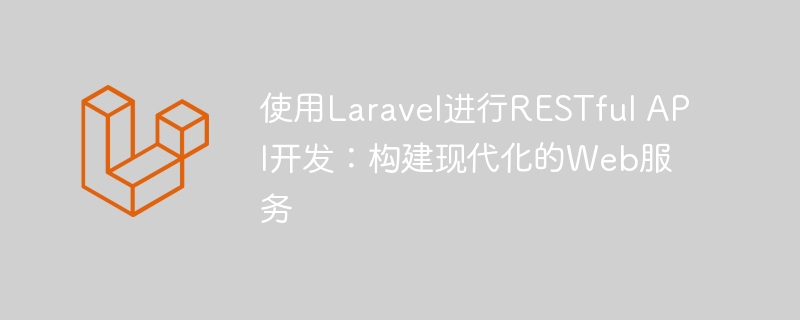

Using Laravel for RESTful API development: building modern web services
With the rapid development of the Internet, the demand for web services is increasing day by day. As a modern Web service architecture, RESTful API is lightweight, flexible, and easy to expand, so it has been widely used in Web development. In this article, we will introduce how to use the Laravel framework to build a modern RESTful API.
Laravel is a simple and elegant web development framework in the PHP language. It provides a wealth of functions and tools to enable developers to build web applications efficiently. Its features include but are not limited to elegant syntax, powerful routing system, extensible database abstraction layer, flexible template engine, etc. In RESTful API development, we can make full use of these features of Laravel.
First, we need to install and configure the Laravel framework. Execute the following command in the command line to install Laravel:
composer global require laravel/installer
After the installation is complete, we can use the following command to create a new Laravel project:
laravel new myapi
Next, we need to define the API routing. In Laravel, route definitions are located in the routes/api.php file. We can use the Route::apiResource method to define the route and specify the controller class to be used:
use AppHttpControllersAPIExampleController;
Route::apiResource('examples', ExampleController::class);The above code defines a examples route, corresponding to The controller class is ExampleController. The apiResource method will automatically generate commonly used RESTful API routes for us, including GET, POST, PUT, DELETEwait.
Next, we need to create the controller class. In Laravel, the controller class is located in the app/Http/Controllers directory. We can use the following command to generate a new controller:
php artisan make:controller API/ExampleController --api
The generated controller class code is as follows:
<?php
namespace AppHttpControllersAPI;
use AppHttpControllersController;
use IlluminateHttpRequest;
class ExampleController extends Controller
{
public function index()
{
// 返回API的index方法逻辑
}
public function store(Request $request)
{
// 返回API的store方法逻辑
}
public function show($id)
{
// 返回API的show方法逻辑
}
public function update(Request $request, $id)
{
// 返回API的update方法逻辑
}
public function destroy($id)
{
// 返回API的destroy方法逻辑
}
}In the above code, we can write each one according to actual needs The logic of the method. For example, the index method is used to obtain a resource list, the store method is used to create a new resource, the show method is used to obtain a single resource, and the updateMethod is used to update resources, destroy method is used to delete resources.
When writing the logic of each method, we can use the convenient methods provided by Laravel to operate the database. For example, we can use the Model::find method to obtain a single resource, the Model::all method to obtain a resource list, and the Model::create method to create a new Resources, use the Model::update method to update resources, use the Model::delete method to delete resources, etc.
Finally, we can use the following command to start Laravel's built-in development server:
php artisan serve
After successful startup, we can access http://localhost:8000/api/ examples to access the API we just defined.
Through the introduction of this article, we have learned how to use the Laravel framework to build a modern RESTful API. Laravel provides a wealth of functions and tools that enable us to develop APIs efficiently and easily implement common RESTful API operations. I hope this article will be helpful to you in RESTful API development!
The above is the detailed content of RESTful API development with Laravel: Building modern web services. For more information, please follow other related articles on the PHP Chinese website!




